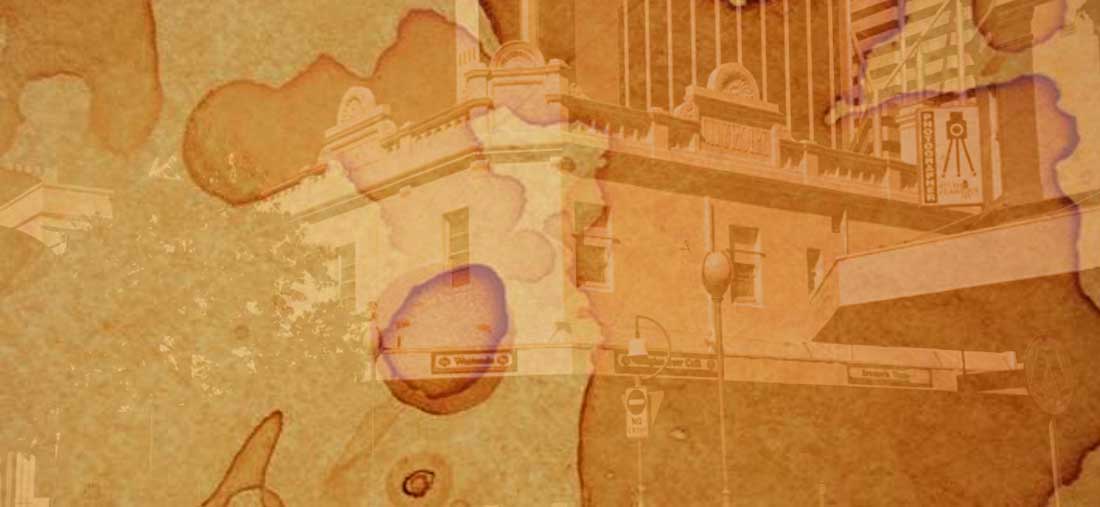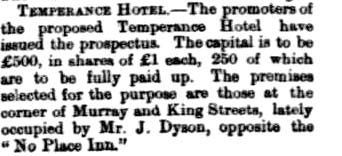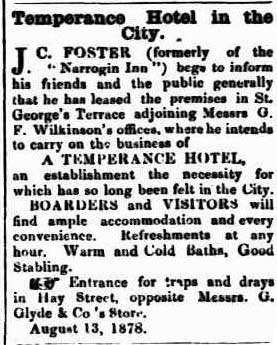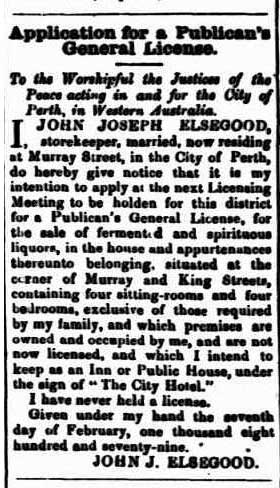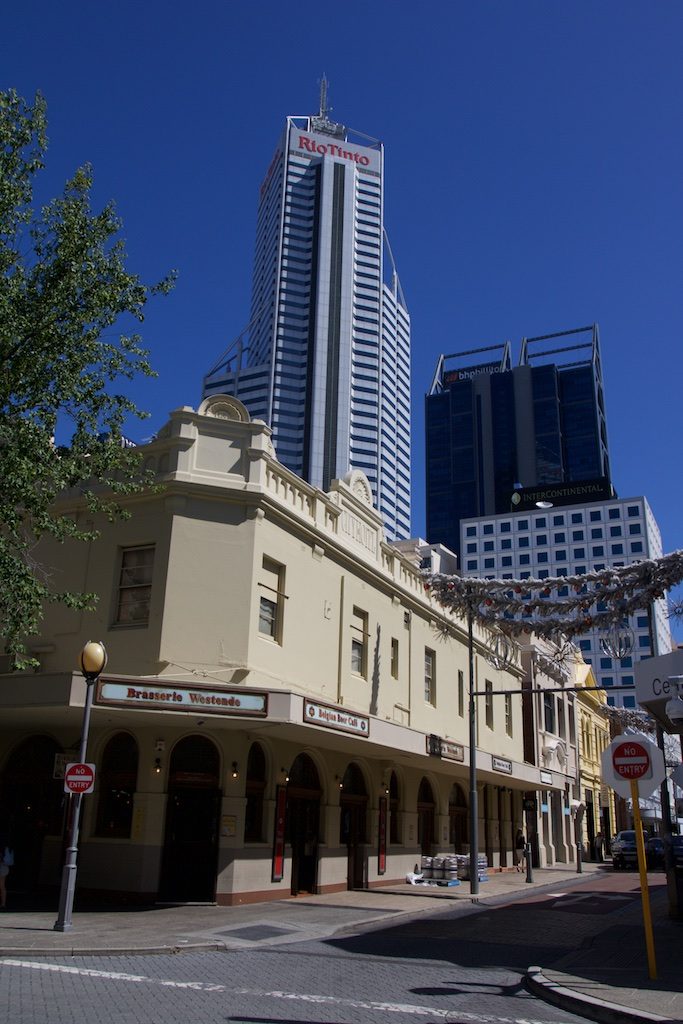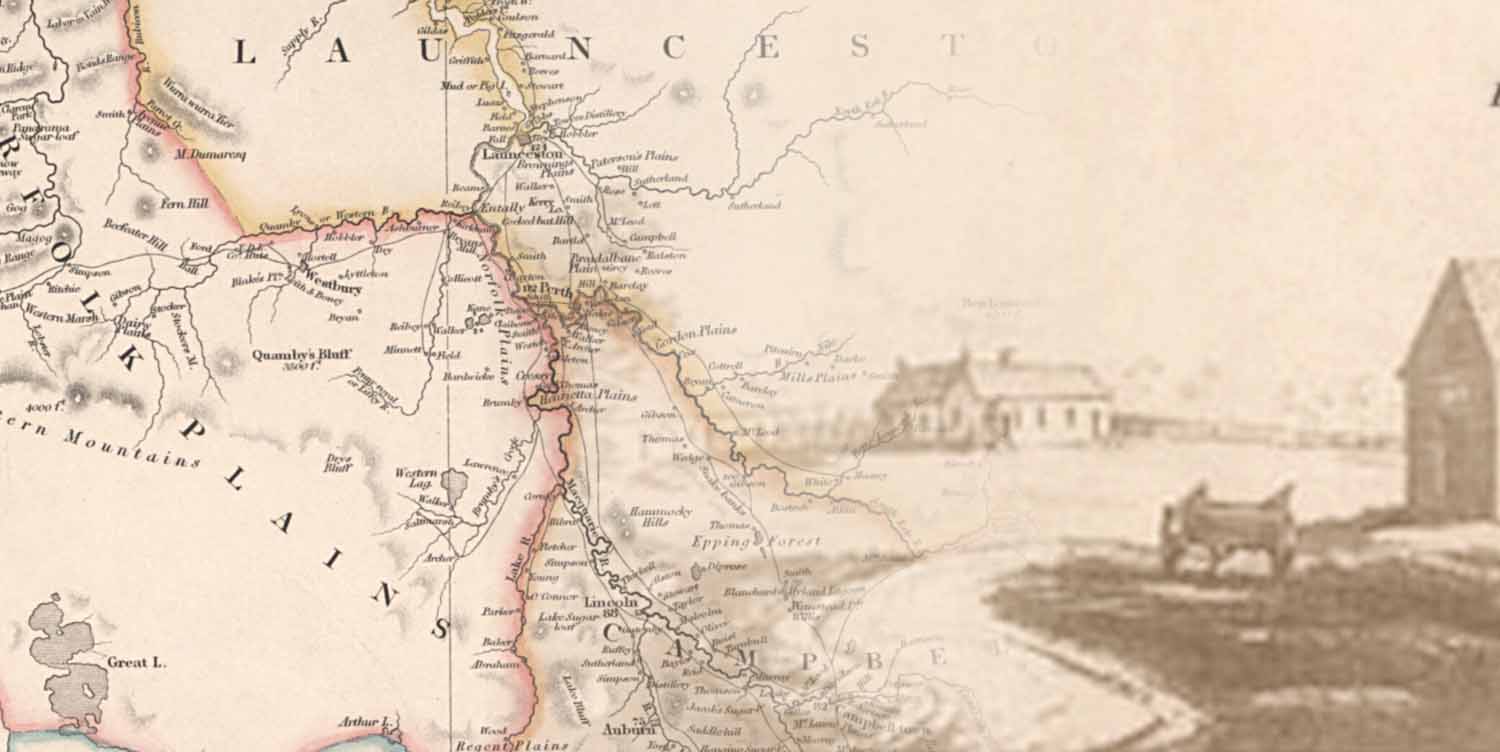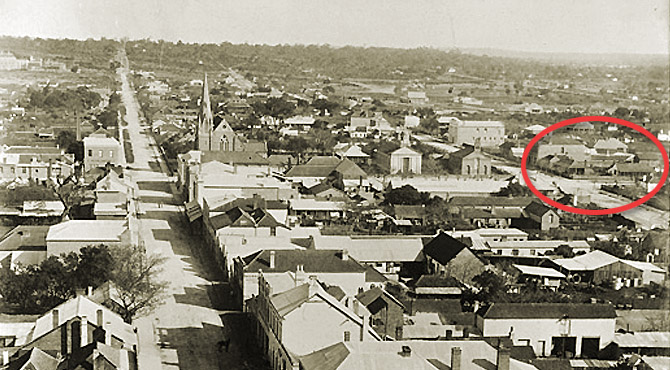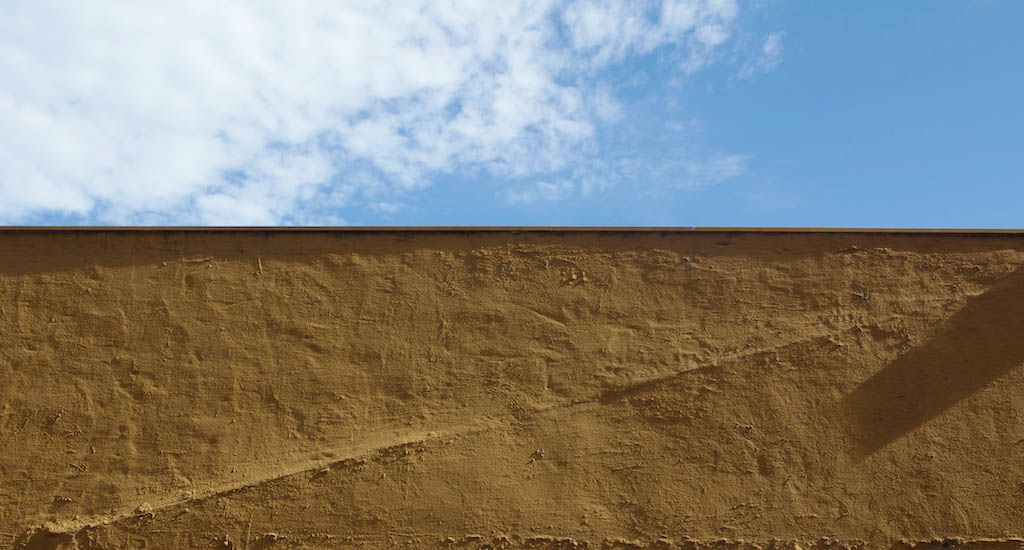Part 2 of the Dyson’s Corner Story.
Do I have any primary source for life in Western Australia in the 1870’s-1880’s more infuriating than the work of Mr Jesse Elijah Hammond (1856-1940)?(Probably, yes— but one should never let the truth get in the way of a good rant…)
He was on the ground when it all dramatically happened for the Dyson family. He even lived next door to the Sons of Australia Benefit Society Club house on Murray Street, so it is inconceivable he was not personally acquainted with them even if he did not count them as as friends.
Their mentions in the text of his 1936 memoir “Western Pioneers: The Battle Well Fought” (the most pompous book title in all of history)? nil.
Only the map that he drew from memory of central Perth for the year 1870 did the name “Dyson” appear. It’s fair enough that that it was not Joseph Dyson’s bakery on the corner of Murray and William Street as it was not established until 1873 and that site is listed under it’s owner’s name: Williams. But on the south and east side of Murray and King streets, where the general dealership and family compound of James Dyson and family had been long established, was a strange label: “Dyson’s Hotel”.
Here is where the land use records provide no help at all. Here is what’s listed in the official record:—
Early Owners of Perth Town Lot G14 (and later part of G15):
| 9 June 1840 | Granted to Charles Brown (pays £3 2s.) |
| from 1842 | Purchased by person(s) unknown, (finally owned by someone called John) |
| 1848 | Purchased by James Dyson (pays £12) |
| 6 April 1874 | Mortgaged to the Western Australian Bank for £500 |
| 19 August 1878 | Purchased by George Shenton |
| 24 August 1878 | Purchased by John Joseph Elsegood |
The only other mention of Dyson’s Hotel is in the map published in Stannage’s “The People of Perth” (1979), but that is just a re-drawing of Hammond’s map.
The only explanation I can give is part of a much larger story I have not got my head around yet. Joseph Dyson, James’s eldest son had quite a few traits not shared by the rest of his clan. For the first he was highly religious (atheists tend not to be called to teach at Methodist Sunday schools), secondly he was interested in the temperance movement (for those who know their Dyson history, no sniggering please).
In July 1877, two months after the original Dyson’s Corner was advertised for sale, he was elected to the committee of the City Temperance League. The League was stacked with fellow members of the Methodist church and chaired by their pastor, the Reverend Lowe. At that precise moment the League was trying to arbitrate a dispute between two other alcohol-hating quasi-religious organisations, the Rechabites and the Good Templars.
In March 1878, the (as yet) unidentified promoters of a “Temperance Hotel” published a prospectus. (A Temperance Hotel would serve beverages that were not alcoholic.) The proposed site of this establishment was to be here:—
Five hundred Pounds… now where have I heard that sum before? Oh yes, the amount of the mortgage that James Dyson and his wife took out on the property back in 1874… what a coincidence! About this same time, George Towton came into his inheritance and took over the lease of the No Place Inn. (I’m sure he was also thrilled by this plan.)
…someone plaintively asked about the time George Shenton (junior), M.L.C., Merchant, acquired the property in August. The amount he paid for it is not recorded on the deed, but it does say that there were no “encumberances” on the property. ie: The mortgage was gone. He also bought Dyson’s Swamp, which was henceforth to be known (up to the end of the the 20th century) as “Shenton Lake”. He was also an extremely pious benefactor of the Wesleyan Church in Perth (as had been his late father) But I’m not sure this was a factor in his dealings on this occasion, for less than a week after his name had been affixed to the title deed, he had sold the property to John Joseph Elsegood, a Perth builder.
A year later, after extensive renovations, Elsegood applied for a hotellier’s licence for his property on King and Murray street, to be known as the “City Hotel”. His application was opposed (predictably, I suppose) by the rival establishment across the street, The No Place Inn. However, when the pastors representing the temperance movement swanned out of the court after successfully thwarting the application of the first petitioner of the day, Elsegood got his licence, although one of the judges commented:
Mr. Loftie—after consulting with the other two magistrates—said the majority were in favor of granting the application, and that therefore a certificate would issue to the applicant. Personally he might say he was opposed to it, and for this reason—while admitting the necessity for increased hotel accommodation (by which he meant board and lodging accommodation) he thought such might be provided without at the same time increasing the facilities already afforded—and which were ample—for the sale of intoxicating drinks.”
The Western Australian Times (Perth, WA : 1874 – 1879) Fri 7 Mar 1879 Page 2
Not only was the idea of a Temperance Hotel dead (at this location), the temperance movement, and in particular the voluble Reverend Traylen, had dropped the ball in blocking the establishment of another legal boosery in town. Traylen had blocked the application and closed an established pub on Barrack Street, the “Commercial Hotel”, on a legal technically (It escaped the attention of precisely no-one that this anti-drink campaigner also owned a property next to the Commercial). That he failed to oppose Elsegood was also noted.
Traylen was furious and responded:
Had I supposed that my leaving the court would be construed into tacit approval of Mr. Elsegood’s application I should have sat to the “bitter end.” If your readers think that consistency demands that I should oppose every applicant, all I can say is, that, circumstances permitting, every new speculator must consider the gauntlet before him.”
The Western Australian Times (Perth, WA : 1874 – 1879) Fri 7 Mar 1879 Page 2
Traylen’s credibility would have been higher if what would have been commonly known back then was as completely forgotten as it is today…
…. Joseph Dyson, son of the former owner of “The City Hotel” land and present active member of the City Temperance League also happened to be John Joseph Elsegood’s brother-in-law.
So Dyson’s Hotel?… I’m just saying.
The City Hotel remained in the Elsegood Family’s hands until the end of the nineteenth century. The site was completely rebuilt in the early twentieth, and this building, now rebranded “The Belgian Beer Cafe” is what exists on the site of the old Dyson’s Corner today.
But the Dyson connection with Murray Street was far from over.
